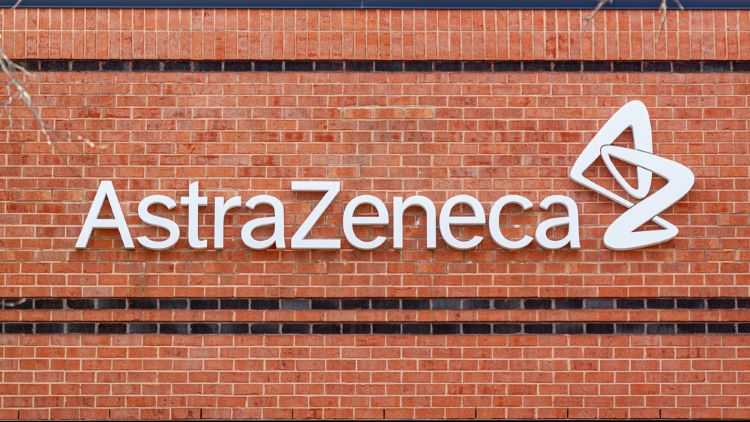AstraZeneca Investment in U.S.: A $50 Billion Commitment

AstraZeneca’s bold move to invest $50 billion in the U.S. marks a significant milestone for the pharmaceutical giant, particularly as it grapples with the implications of rising pharmaceutical tariffs. This ambitious commitment, announced recently, aims to bolster AstraZeneca’s manufacturing and research capabilities, especially in producing its innovative GLP-1 drugs for weight management. By establishing a new production facility in Virginia, the company is poised to create thousands of new jobs and cement its footprint in the biotech manufacturing USA sector. As the healthcare landscape evolves, AstraZeneca’s U.S. investment strategy reflects a broader trend among pharmaceutical firms to enhance domestic operations amidst shifting trade dynamics. This investment not only showcases AstraZeneca’s dedication to the American market but also highlights its ambition to harness technological advancements to optimize production and meet growing consumer needs.
In a significant declaration, AstraZeneca aims to channel $50 billion into U.S. manufacturing and research by 2030, demonstrating a committed response to the evolving pharmaceutical landscape. This investment encompasses the establishment of a state-of-the-art production facility focused on revolutionary GLP-1 drug offerings, thereby positioning AstraZeneca as a leader in biotechnology within the United States. With this venture, the company seeks to address the challenges posed by pharmaceutical tariffs while boosting American job creation and local manufacturing capabilities. Moreover, AstraZeneca’s strategy reflects a growing trend among international pharmaceutical companies to bolster their presence in the U.S. and leverage innovative technologies to enhance their operational efficiencies. The anticipated benefits from this endeavor underscore the importance of the U.S. market in AstraZeneca’s global growth trajectory.
AstraZeneca’s $50 Billion Investment in the U.S.
AstraZeneca’s pledge to invest $50 billion in the U.S. underscores the company’s commitment to enhancing its production and research capabilities within the country. This substantial investment is set against the backdrop of increasing pharmaceutical tariffs that have prompted many firms to rethink their manufacturing strategies. With a significant portion of the funds allocated to a state-of-the-art facility for the production of GLP-1 drugs, AstraZeneca is aiming to bolster its position within the competitive biotech landscape.
The planned facility in Virginia is particularly noteworthy as it represents AstraZeneca’s largest investment globally. By leveraging cutting-edge technology, including AI and automation, the company will optimize its production processes for weight management drugs. This not only demonstrates AstraZeneca’s confidence in the U.S. market but also highlights the potential for innovation in biotech manufacturing in the USA, which is crucial for meeting the growing demands in healthcare.
Impact of Pharmaceutical Tariffs on the U.S. Market
The ongoing discussion around pharmaceutical tariffs has created a complex environment for companies like AstraZeneca, which are now reevaluating their manufacturing and investment strategies. The proposed tariffs, with rates that could reach up to 200%, are aimed at incentivizing companies to reshore their production. However, this creates both an opportunity and a challenge for firms seeking to maintain their competitive edge while adapting to new policy frameworks.
AstraZeneca’s significant investment decision comes at a pivotal time when several other pharmaceutical firms are also increasing their U.S. operations. As the industry awaits clarity on the final decisions regarding tariffs, companies are racing to position themselves favorably in a market that is shifting in response to government initiatives. The emphasis on local manufacturing aligns with broader economic goals of enhancing job creation and sustaining innovation in the sector.
The Role of GLP-1 Drugs in AstraZeneca’s Strategy
AstraZeneca’s focus on GLP-1 drugs, particularly in relation to its new Virginia facility, highlights the company’s strategy to tap into the growing market for weight management solutions. These drugs, known for their effectiveness in treating obesity and metabolic disorders, are gaining traction as public health concerns escalate globally. By investing heavily in this sector, AstraZeneca aims to not only capitalize on a lucrative market but also to contribute to better health outcomes.
In addition to meeting patient needs, AstraZeneca’s commitment to GLP-1 drug production showcases its intent to leverage innovative scientific advancements. This aligns with its goal of reaching $80 billion in annual revenue by 2030, with a substantial portion expected from the U.S. market. The strategic focus on biopharmaceutical advancements within America also reflects the growing demand for advanced therapeutic options and underscores the importance of fostering a robust biotech manufacturing ecosystem.
Job Creation Through AstraZeneca’s Investments
One of the most significant implications of AstraZeneca’s $50 billion investment is the anticipated creation of tens of thousands of jobs across various states in the U.S. The investment spans multiple sites, including Maryland, Massachusetts, California, Indiana, and Texas, and is aimed at boosting both manufacturing and research capabilities. This job creation is not just beneficial for local economies but is also vital in enhancing the national workforce in the biotechnology and pharmaceutical sectors.
As AstraZeneca expands its operations and enhances its production facilities, the ripple effects on job creation could be substantial. The transition towards more localized manufacturing in light of potential tariffs could mean a revitalization of skilled labor in the biopharma sector. This aligns well with the growing emphasis on innovation and research within the U.S., fostering homegrown talent and expertise that can drive continued advancements in healthcare solutions.
AstraZeneca and the Future of Biotech Manufacturing in the U.S.
AstraZeneca’s commitment to invest heavily in U.S.-based biotech manufacturing sets a strong precedent for other companies in the industry. By establishing cutting-edge facilities equipped with advanced technologies, AstraZeneca is leading the charge toward revitalizing the pharmaceutical manufacturing landscape in America. This shift is essential not only for meeting domestic demand but also for positioning the U.S. as a global leader in biotechnological innovation.
The focus on advanced production capabilities, particularly through AI and data analytics, signals a transformative era for biotech manufacturing in the USA. AstraZeneca’s strategic moves highlight the necessity for the pharmaceutical industry to adapt to evolving market dynamics and regulatory landscapes while ensuring the delivery of high-quality medical solutions. As other firms follow suit, the collective impact could lead to a robust and self-sufficient biotech ecosystem that enhances innovation and competitiveness.
Responses from Other Pharmaceutical Companies
AstraZeneca’s unprecedented investment comes at a time when other pharmaceutical companies are also expanding their U.S. operations in light of rising tariffs. Industry giants such as Novartis, Sanofi, and Eli Lilly have announced similar initiatives to increase their domestic manufacturing capabilities. This trend towards localization reflects a broader industry response to tariffs and the overall push for a more resilient supply chain.
The response from multiple firms indicates a growing realization within the industry that investing in U.S. infrastructure and job creation is vital for long-term sustainability. By aligning their strategies with government objectives, these companies are not only ensuring compliance but also positioning themselves to benefit from the anticipated growth in the local market. The collaboration between the government and pharmaceutical firms could lead to innovative solutions to tackle pressing health issues, thereby benefiting society as a whole.
Creating a Sustainable Future for Biopharmaceuticals
As AstraZeneca, along with other pharmaceutical companies, invests significantly in U.S. manufacturing, the focus also shifts towards sustainability practices within the biopharmaceutical sector. This involves not only the production of drugs but also the environmental impacts associated with manufacturing processes. Sustainable practices can enhance the company’s reputation and contribute positively to community health outcomes.
By implementing eco-friendly technologies and prioritizing sustainable manufacturing processes, AstraZeneca can lead the way in setting industry standards. The commitment to sustainability aligns with the broader global goals of reducing carbon footprints and enhancing the circular economy in biopharma. Through its investments, AstraZeneca is positioned to foster innovative practices that promote both economic growth and environmental responsibility.
Regulatory Considerations in Biopharmaceutical Investments
AstraZeneca’s investments and the overall trend towards increased domestic manufacturing come with regulatory considerations that could shape the future landscape of the pharmaceutical industry in the U.S. As the company navigates tariffs and compliance with evolving regulations, it must also advocate for policies that support innovation and investment in biopharmaceutical research and manufacturing.
The dialogue between pharmaceutical companies and policymakers is crucial for creating an environment conducive to growth. AstraZeneca’s significant investment will likely stimulate discussions around the need for regulatory frameworks that promote not only job creation and economic enhancement but also prioritize patient access to innovative therapeutics. Collaborative efforts can ensure that the pharmaceutical sector remains agile in adapting to both market demands and regulatory challenges.
The Importance of Research and Development in AstraZeneca’s Growth
AstraZeneca’s investment plan includes a substantial focus on research and development (R&D), which is crucial for maintaining a competitive edge in the biopharmaceutical sector. R&D is the backbone of innovation, allowing the company to bring new and effective treatments to market. By prioritizing R&D alongside manufacturing investments, AstraZeneca is setting itself up for long-term success and sustainability.
The integration of enhanced research capabilities across various U.S. locations is aligned with the company’s goal of achieving higher revenue targets. Investing in R&D not only accelerates the development of new products but also strengthens AstraZeneca’s portfolio against competitors. By fostering an environment where scientific discovery can thrive, the company is paving the way for new breakthroughs that can address complex health challenges.
Frequently Asked Questions
What are the details of AstraZeneca’s investment in the U.S.?
AstraZeneca has committed to invest $50 billion in the U.S. by 2030, focusing on enhancing manufacturing and research capabilities, especially for its GLP-1 obesity drug. This significant investment underlines their commitment to innovation and growth in the American biopharmaceutical sector.
How will AstraZeneca’s U.S. investment affect job creation?
AstraZeneca’s $50 billion investment in the U.S. is expected to create tens of thousands of jobs across various states, as the company expands its manufacturing and research facilities to support biotech and pharmaceutical production.
What is the purpose of the new production facility that AstraZeneca plans to build in the U.S.?
The new multi-billion dollar production facility planned by AstraZeneca in Virginia aims to focus on weight management solutions, specifically the oral GLP-1 drug, which is part of their metabolic portfolio.
How does AstraZeneca’s investment relate to U.S. pharmaceutical tariffs?
AstraZeneca’s investment in the U.S. comes as a strategic response to U.S. pharmaceutical tariffs, with an intention to bolster domestic manufacturing and align the company with the federal push to increase domestic production.
Why is AstraZeneca focusing on biotech manufacturing in the USA?
AstraZeneca is prioritizing biotech manufacturing in the USA to tap into the country’s innovative potential in biopharmaceuticals, aiming to support its goal of achieving a revenue of $80 billion annually by 2030, with substantial contributions expected from the U.S. market.
What technologies will AstraZeneca leverage in its new U.S. manufacturing facility?
The new manufacturing facility will incorporate advanced technologies such as AI, automation, and data analytics, optimizing production processes for AstraZeneca’s oral GLP-1 drug and other biopharmaceutical products.
When is AstraZeneca expected to complete its U.S. investment?
AstraZeneca aims to complete its investment in the U.S. by 2030, marking a significant long-term commitment to enhancing its research, development, and manufacturing capabilities in the region.
What impact will AstraZeneca’s investment have on other pharmaceutical companies?
AstraZeneca’s $50 billion investment is likely to encourage other pharmaceutical companies to increase their U.S. spending as well, following a trend of investments by several global firms aiming to align with domestic manufacturing initiatives.
How does AstraZeneca’s investment align with its overall business strategy?
This substantial investment contributes to AstraZeneca’s strategic goal of expanding its operational footprint in the U.S., thereby enhancing its market share and innovation in the biopharmaceutical sector, particularly in weight management and metabolic treatments.
What has AstraZeneca said about its commitment to the U.S. market?
AstraZeneca CEO Pascal Soriot emphasized the company’s strong belief in the innovation potential of America’s biopharmaceutical sector, viewing the $50 billion investment as a commitment to support growth and job creation in the U.S.
| Key Points |
|---|
| AstraZeneca’s Investment Amount: $50 billion |
| Investment Timeline: By 2030 |
| Focus: New production facility for weight management and metabolic portfolio including the oral GLP-1 obesity pill |
| Location: Commonwealth of Virginia |
| Significance: Largest single manufacturing investment globally for AstraZeneca |
| Impact: Creation of tens of thousands of jobs across multiple U.S. states |
| CEO’s Statement: Reflects belief in America’s innovation in biopharmaceuticals |
| Revenue Target: $80 billion annually by 2030, with half from the U.S. |
| Context: Following pharmaceutical tariffs and other companies’ similar investments |
Summary
AstraZeneca’s investment in the U.S. marks a significant commitment to enhance its manufacturing and research capabilities. With a planned $50 billion investment by 2030, AstraZeneca aims to establish itself as a leader in the biopharmaceutical sector while responding to evolving trade dynamics and economic policies. This move not only emphasizes the company’s belief in U.S. innovation but also indicates a proactive approach to creating jobs and fostering industry growth amidst regulatory changes.




